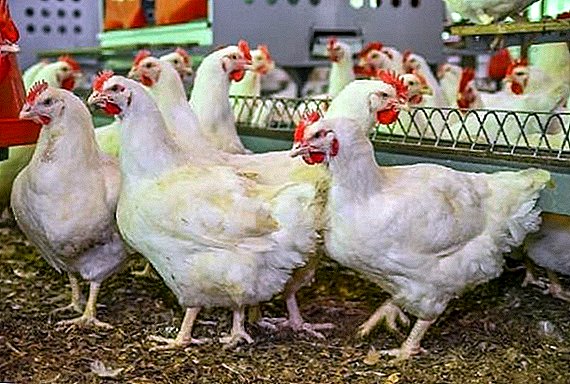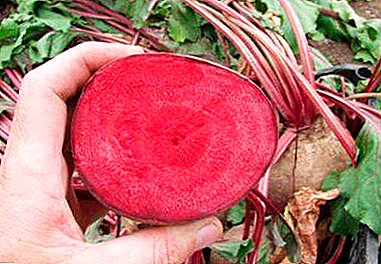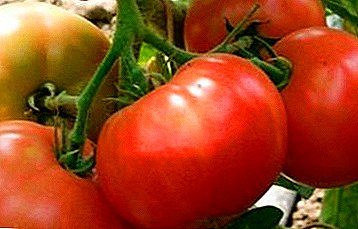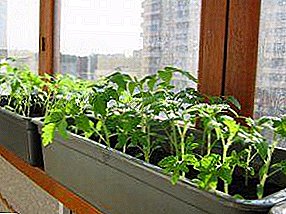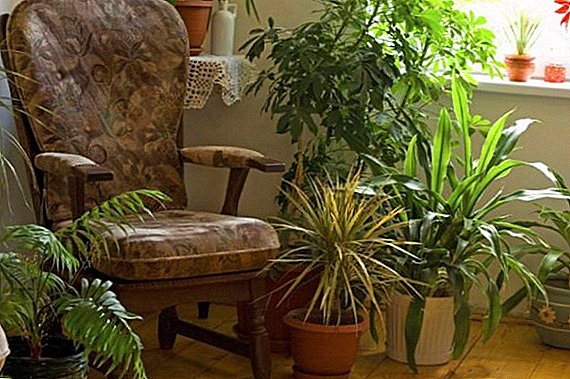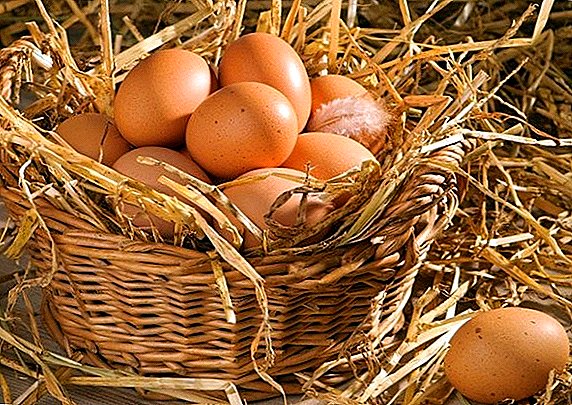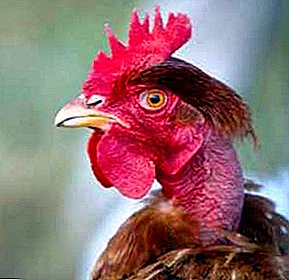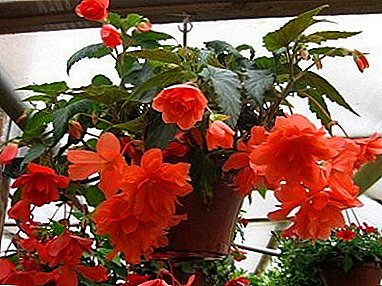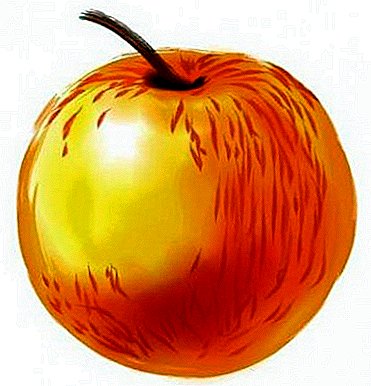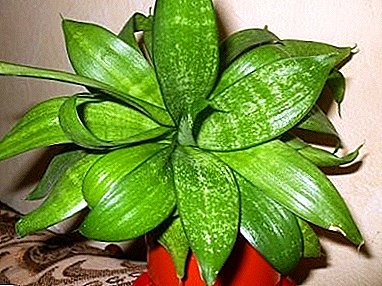
In 1941, from the original variety of sansevieriya laurenti, the breeder S. Khan bred a short one - no more than 30 cm - a rosette variety of sansevieria, which was named after its creator: hanni.
Later, in 1953, S. Khan received a variety of the same miniature Sansevieria with yellow stripes on the sides of the leaves - Golden (Golden) Hanni.
Then the line of low Sansevieri continued silver (silver) hanni with alternation of light, almost white, and bright green stripes, as well as Hanni Cristate, which has retained the typical pike-speckled leaf color, but has acquired a pronounced tendency to wrap the edges of the sheet towards the center, so that the sheet practically folds longitudinally in half.
For all varieties of miniature sansevierii characteristic ofincreased endurance and simplicitypeculiar to "pike tails".
Home care
- Lighting

Sansevieria Golden Hanni prefers bright lighting, responds well to the open sun and only on the most sunny sunny days on the south side will it need to shade. On the north windows and in the winter time, it is good to arrange additional lighting.
At the optimum amount of light for these varieties, a more general “pike” pattern appears, as well as white and yellow stripes on variegated forms.
- Temperature
Optimal summer temperature range - from 20 to 25 degrees, spring and autumn - 18-20 degrees, but in the winterin the period of rest - 15 degrees. A short-term decrease to plus 10 degrees Sansevieriya Hunny survive; but already at plus five to eight degrees, the death of the plant may occur.
- Soil composition
Good growth will provide ready ground for cacti and succulents.
You can also cook one of the following mixes:
three parts of leafy land, two - sod and two - coarse sand;
four parts of sod, two - leafy ground and one part of sand.
Landing
 Container for the landing of the Sansevierii hanni should choose ceramic, wide and shallow, corresponding to the dimensions of the plant. You can be guided by this ratio: the diameter of the pot is twice its height. In the bottom must be drainage hole.
Container for the landing of the Sansevierii hanni should choose ceramic, wide and shallow, corresponding to the dimensions of the plant. You can be guided by this ratio: the diameter of the pot is twice its height. In the bottom must be drainage hole.
At the bottom of the planting tank must be laid a layer of drainage: small pebbles, expanded clay, brick battle with pieces of charcoal. This layer should be thicker, the younger the plant and can fill up to a third of the pot volume.
When landing pay special attention to preservation of the root system, trying to keep an earthen room.
- Transfer
Hansev Sansevieria transplanted spring March-April. A signal to transplant is the complete weaving of the earth by its roots. Young plants give such a "signal" annuallymore mature - once in 2-3 years.
Before transplanting, watering is stopped, planted in wet soil and after transplanting. water is not immediately.
- Watering

Summer Hansei Sansevieriya enough to pour once a week, but in winter - once a month. This is the case when it is better to dry than pereuvlazhnit.
Particularly protected from ingress of irrigation water, hardwood: moisture stagnation in it leads to root rotten which will ruin the plant.
Air is preferred dry spraying is not necessary, you should only periodically wash the dust from the leaves.
- Top dressing
During the period of active growth of Sansevieria, spring and summer every other week conduct specialized feeding mixture for cacti and succulents.
If complex fertilizers are used, it is necessary to take into account that they should not have an excess of nitrogenous compounds and that this complex should be dissolved in much more water than for other plants.
- Pruning
This operation is applied only to damaged leaves. They, as a rule, dry out and then such a section should be cut off, leaving a narrow dry border for the process to stop.
- Bloom
Sansevieria Hanni can bloom at any time of the year - with star-shaped small flowers on an elegant peduncle. This peduncle should be cut at the end of flowering.
To induce the plant to bloom, it is transplanted into cramped, just 4-5 cm wider than before, the pot.
Breeding
 At home, this variety Sansevierii multiply by dividing the root and cuttings. It should be noted that the variegated forms - Hanni Golden and Hanni Silver - during propagation by cuttings will lose their color. To preserve it, these varieties propagate exclusively by dividing rhizomes.
At home, this variety Sansevierii multiply by dividing the root and cuttings. It should be noted that the variegated forms - Hanni Golden and Hanni Silver - during propagation by cuttings will lose their color. To preserve it, these varieties propagate exclusively by dividing rhizomes.
- Reproduction division of rhizome
With the spring transplant, the extracted rhizome is cut with a sharp instrument. Each segment must have at least one growth bud. Sections are treated with fungicide or crushed charcoal and planted parts of the rhizome in separate containers of appropriate sizes.
- Reproduction by cuttings.
For such reproduction, you need to select a mature leaf, cut it, lay the bottom surface up and divide it with a sharp knife in the transverse direction into pieces from five to seven centimeters long. These leaf cuttings are dried for some time, then planted in moistened sand, buried by a third of the length, and covered with plastic wrap. Moderate watering is done through the pallet, the greenhouse is regularly aired. Rooting, as a rule, occurs in one and a half or two months. Then the cuttings are grown, planted in the standard for sansevieri soil mixture.
Trouble signals
Yellow leaves - a sign of waterlogging, stagnation of water in a leafy outlet. Need a transplant with the removal of damaged leaves and drying the roots.
Sansevieria is not growing - As a rule, this is a consequence of too low temperatures.
Leaves with whitish spots - sunburn marks.
Brown spots on the leaves - lack of light and excess moisture.
Leaf rot with dry ground - the plant is contained in the cold.
Spots of red-brown color with yellow border - fungal disease.
Diseases and pests
 If Sansevieria Hanni is contained in more or less suitable conditions, she practically does not suffer from diseases and pests.
If Sansevieria Hanni is contained in more or less suitable conditions, she practically does not suffer from diseases and pests.
However, without receiving due, not at all complicated, care, first of all, being in cold and damp conditions, the plant loses its inherent immunity and is affected rot and fungal infections. In such cases, it is necessary to remove the affected parts, process the sections with fungicides, dry the roots, plant in fresh ground and keep the plant in a warm room, watering very moderately.
"Pike tails" - sansevieri belong to the most resistant plants in room culture. With sufficient light, not too low temperature and limited watering, they retain their subtle decorative effect for many years. In addition, the well-kept miniature rosettes of Sansevieria Hanni - the unpretentious inhabitants of bright window sills - not only decorate the interior, but also clean the air in the room where they are from such toxic substances as formaldehyde and nitrogen oxide.
A photo
More photos of Sansevieria Hanni, see below:






